Some of the links in this post may be affiliate links.
Have you been wondering how often to water spider plants? In this post, you’ll learn the best way to determine when to water your Chlorophytum comosum, commonly known as spider plant or airplane plant.
Keep reading to learn all the pitfalls and dangers of common advice and learn how to properly water your spider plant once and for all.
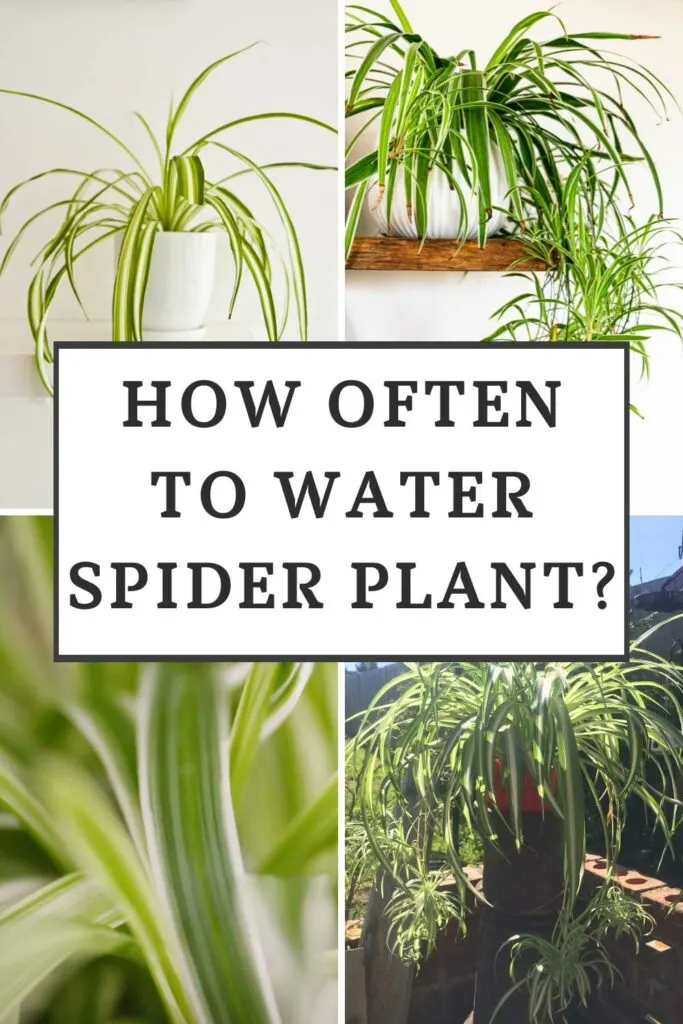
Table of Contents
HOW OFTEN TO WATER SPIDER PLANT
Here are 5 really important tips that are crucial to consider when watering your spider plant.
Be sure to read everything through since these are the most common pitfalls or struggles that I’ve found most people have when watering their indoor plants.
The first 2 tips include what NOT to do, and the rest of the tips will help you determine exactly when to water your spider plant.
1. DON’T USE A WATERING SCHEDULE
One of the most dangerous, and very common, watering tactics is to use a strict watering schedule. Often times it is the “once a week” schedule that people recommend.
While a regular checkpoint is great, you should only use it to determine IF your spider plant should be watered, versus the schedule being followed blindly.
This is not what most people want to hear, but the answer to “how often should I water my spider plant” is, you guessed it…it depends. Why does it depend?
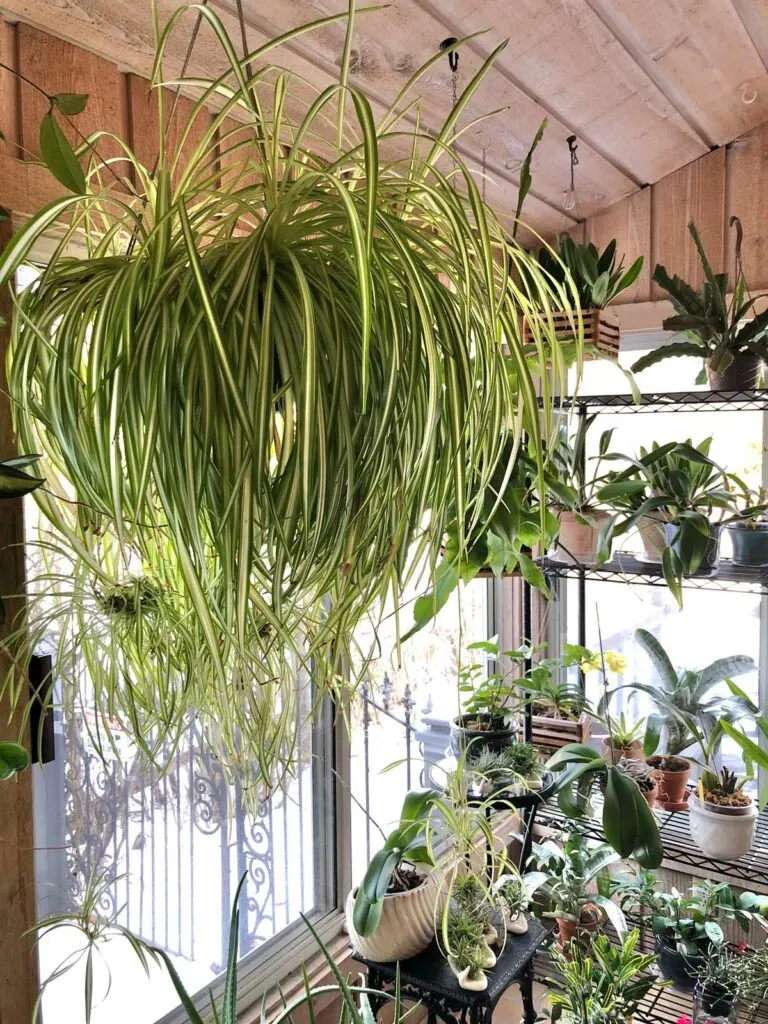
All of our conditions are different so WHEN we water our spider plant will naturally vary.
All of these factors affect how quickly your potting mix dries out: pot size, pot type, potting mix type, the amount of light that your plant received, temperatures inside your home, humidity, etc. Here is a quick rundown:
- Pot size matters. Small pots will dry out more quickly than large pots.
- Pot type matters. Pot types like terra cotta will dry out much more quickly than plastic pots or ceramic pots.
- Your potting mix type also matters. Chunkier potting mixes will dry out much more quickly, but a well-draining soil is a must.
- The amount of light is crucial and affects the health of your plant and how efficiently it uses water.
- Cooler temperatures reduce the rate at which your spider plant uses water.
- Mature plants that are very root bound will also need a lot more frequent watering.
Not only do all our conditions vary, but even within our home, growing conditions will vary throughout the year. Summer months versus winter months have drastically different light levels, and thus, affects how quickly the soil dries out.
All of these factors change the watering frequency that your plant needs, so you’ll have to be adaptable.
For example plants growing in high light and warm temperatures will require more much regular watering than a plant growing in low light and cooler temperatures.
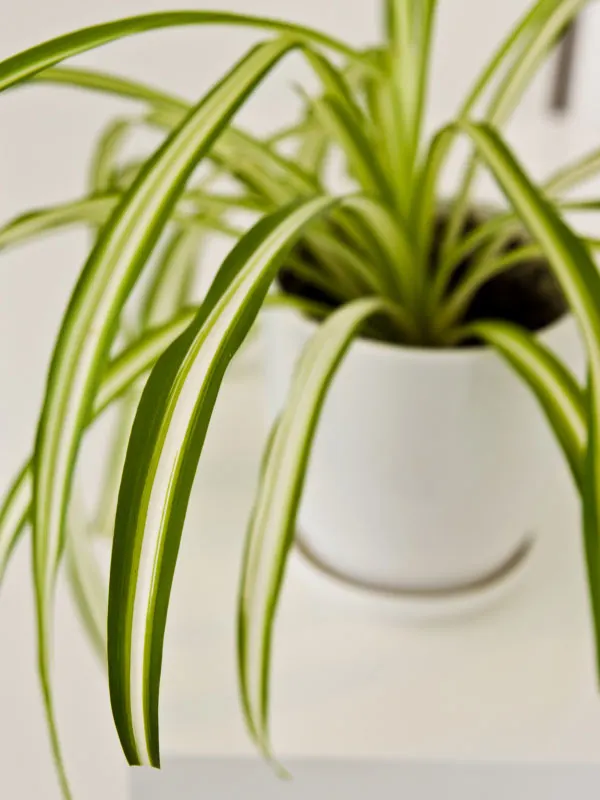
2. DITCH THE SOIL MOISTURE METER
One of the biggest pitfalls I’ve seen with many plant parents is the use of soil moisture meters. If you haven’t started using one, I would recommend avoiding them.
Many of the inexpensive ones are just too junky and not reliable.
I’ve seen too many people kill their plants as a result of using a faulty moisture meter. All too often, the meter will read “moist” when the potting mix feels really dry to the touch.
And when people trust the faulty moisture meter, they will continue to not water and eventually kill their plant.
Spare yourself the frustration and throw away the moisture meter. What should you do instead?
3. USE THE FINGER TEST
The best way to determine when to water your spider plant is simply by using a finger test to judge the soil moisture.
Spider plants do not like dry soil and will respond with yellow leaves (particularly the lower ones first) and your entire plant drooping if kept dry for too long.
Simply take your finger and insert it into the surface of your potting mix.
As a general rule of thumb, allow the top inch of the soil to dry out before watering again. As long as your plant is sitting in good light, this rule of thumb is solid.
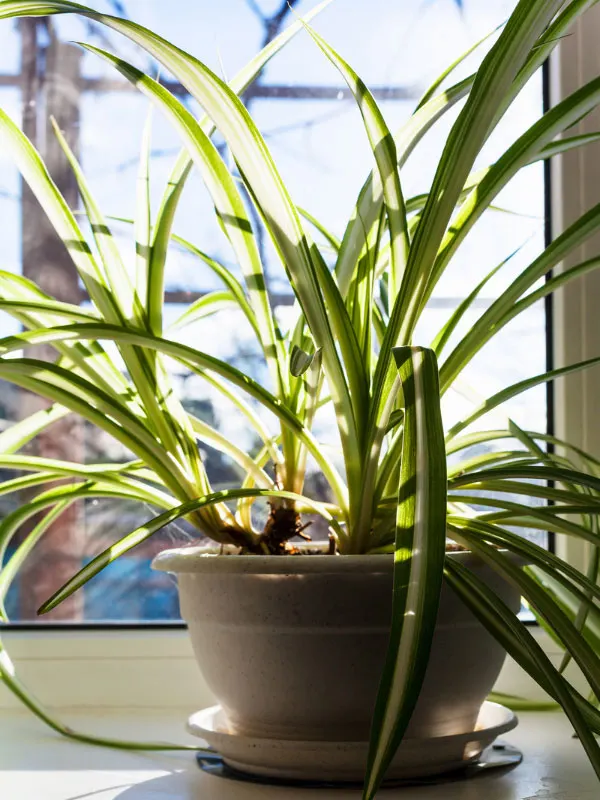
4. WATER THOROUGHLY
Too many people are so scared of “overwatering” and overly concerned about adding too much water that they ironically end up doing the opposite: not adding enough water and therefore dehydrating their spider plant.
Do not measure the amount of water that you add to water your spider plant.
Your goal is to thoroughly moisten your spider plant’s potting soil, regardless how much water it takes, so make sure you circle your watering can all around and keep watering until all excess water drains away.
One caveat though. Always make sure your pots have drainage holes so excess water can escape. Not having a drainage hole will run the risk of perpetually wet soil which can lead to root rot.
I’m not saying that it’s impossible to grow plants in pots without drainage, but it is far from ideal. Why make your life any harder?
Sometimes watering a hanging basket, which is how spider plants are typically grown (given their natural habit of growing long stolons with pups), can be challenging.
I like to hang my spider plant over a bathtub or in the shower in order to make watering easier so that you’re not getting water all over your floors. When the water has drained completely, I’ll place it back in its growing location.
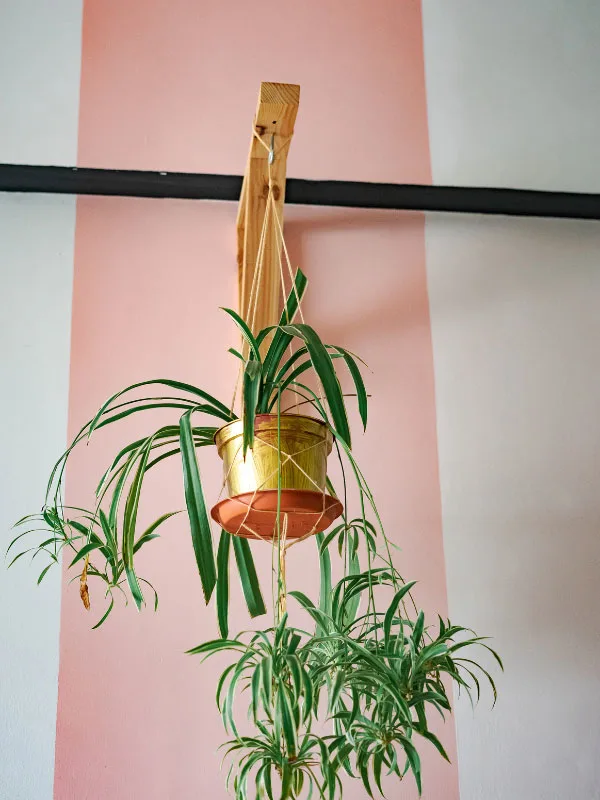
5. WATER QUALITY CAN MATTER
This isn’t as important as the previous tip, but it is something to consider when watering your spider plant. Spider plants are notorious for being sensitive to fluoride in tap water. This will not kill your spider plant, but it can cause brown tips to form.
There are many other causes of brown leaf tips in spider plants, but fluoride toxicity is one of them.
In order to avoid this, you can simply use purified, filtered, or distilled water (don’t forget to fertilize though). I like to use Dyna-Gro Grow (link to Amazon).
This is an amazing fertilizer and I’ve been using it on all of my houseplants for years.
If you don’t want to keep buying jugs of distilled water, consider collecting rain water or using filtered water.
One convenient filtration system that I love is the ZeroWater filter.
It actually removes the majority of fluoride and this is wonderful for plants like spider plants, and others that are sensitive to tap water additives like Calatheas, Orchids, Bromeliads, Peace Lily, and more.
The ZeroWater filter also removes a host of other additives and makes your water almost on par with distilled water. It even comes with a total dissolved solids meter so you can monitor the filter’s effectiveness and change it when needed.
OTHER TIPS THAT AFFECT WATERING
ROCKS AT THE BOTTOM OF THE POT ARE NOT A SUBSTITUTE FOR DRAINAGE HOLES
This is a popular practice that many people employ for pots that don’t have a drainage hole. The water will still collect at the bottom of the pot and have nowhere to go, so I never recommend doing this.
If you want to use a decorative pot that doesn’t have a drainage hole, simply plant your spider plant in a pot with drainage holes and slip it into the decorative pot that doesn’t have a drainage hole.
When you water, slip the plant out, water it, and then slip it back into the decorative pot.
GIVE YOUR SPIDER PLANT ENOUGH LIGHT
Plants need light to photosynthesize, and if you have your plant in dim light, it will not use as much water and you may run the risk of keeping your potting mix wet for too long.
Situate your spider plan in front of a nice window that has bright light. These are not low light plants. Lower light can result in limp leaves that bend and aren’t as sturdy.
Windows with no direct sun at all are fine, but spider plants will benefit from a few hours of direct sun indoors.
An eastern-facing or western-facing window can be great locations. An unobstructed south-facing window (in the northern hemisphere) are sunny and these are great for spider plants as well.
Keep in mind that your plant will dry out much more quickly and need much more frequent watering in bright light, so use the finger test method described earlier to determine when to water.
DON’T USE AN OVERSIZED POT
For best results, when you repot your spider plant, a good rule of thumb is to only go up one pot size. For example, if your plant is in a 4-inch diameter pot, go up to a 6-inch pot.
If you go much bigger, the excess soil volume may cause the potting mix to stay wet for too long, especially if you don’t have your plant growing in bright enough light.
Spider plants will require pretty frequent repotting since they grow quickly. The root ball can become very tight, so if your plant seems to be drying out a lot more quickly than it used to, it could be root bound and it could be time for a new, bigger pot.
This is one example why following strict watering schedules eventually fail. As plants become more and more root-bound, they will dry out much more quickly.
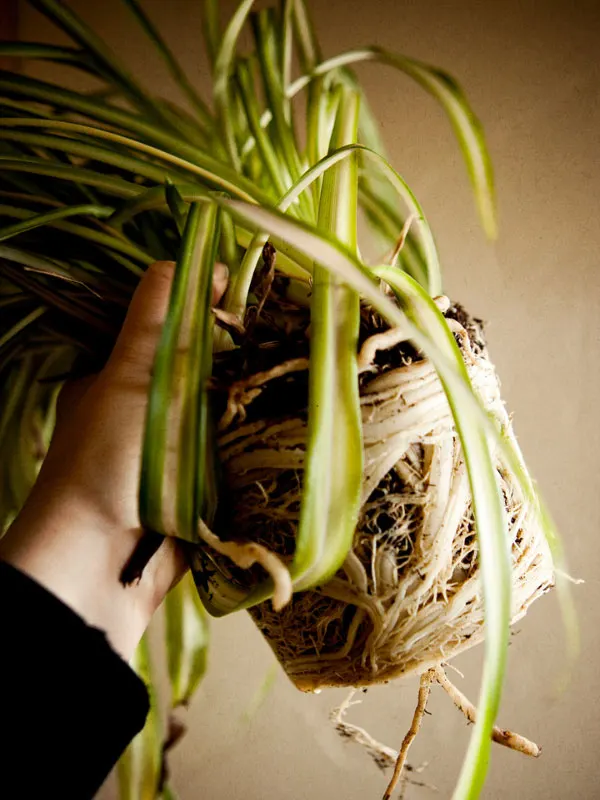
BOTTOM WATERING VS. TOP WATERING
There are pros and cons to both of these methods, but in general, I don’t recommend bottom watering. The main reason is that repeated bottom water will cause a salt buildup in the soil of your plant.
Salts from fertilizers and minerals from tap water will build up and cause harm to your roots. If you do like to bottom water, make sure that you periodically flush with plain water (distilled or filtered would be best).
There is one instance where bottom watering can be helpful. If your spider plant has dried out a lot and you go and top water and the water seems to run straight through with very little absorbing in the soil, bottom watering can help tremendously.
When using a peat moss-based potting mix, if you allow the mix to dry out completely for too long, the peat moss actually becomes hydrophobic, which means it repels water.
In order to help the potting mix accept water properly again, you’ll either have to water it several times in a row, or use bottom watering.
Simply place your spider plant pot in a few inches of standing water (sink, bucket, saucer) and leave it to absorb water through the drainage holes for an hour or two.
By capillary action, water will move upwards into the pot and absorb water. Check on your plant after an hour or two, and your soil should now be sufficiently hydrated. At this point, if the surface of the pot still feels dry, simply top water once and you should be good to go.
I hope you’ve enjoyed this post on how often to water spider plants. Remember that a strict schedule should not be used, but rather, aim to water when your plant needs it, versus when a calendar tells you to.

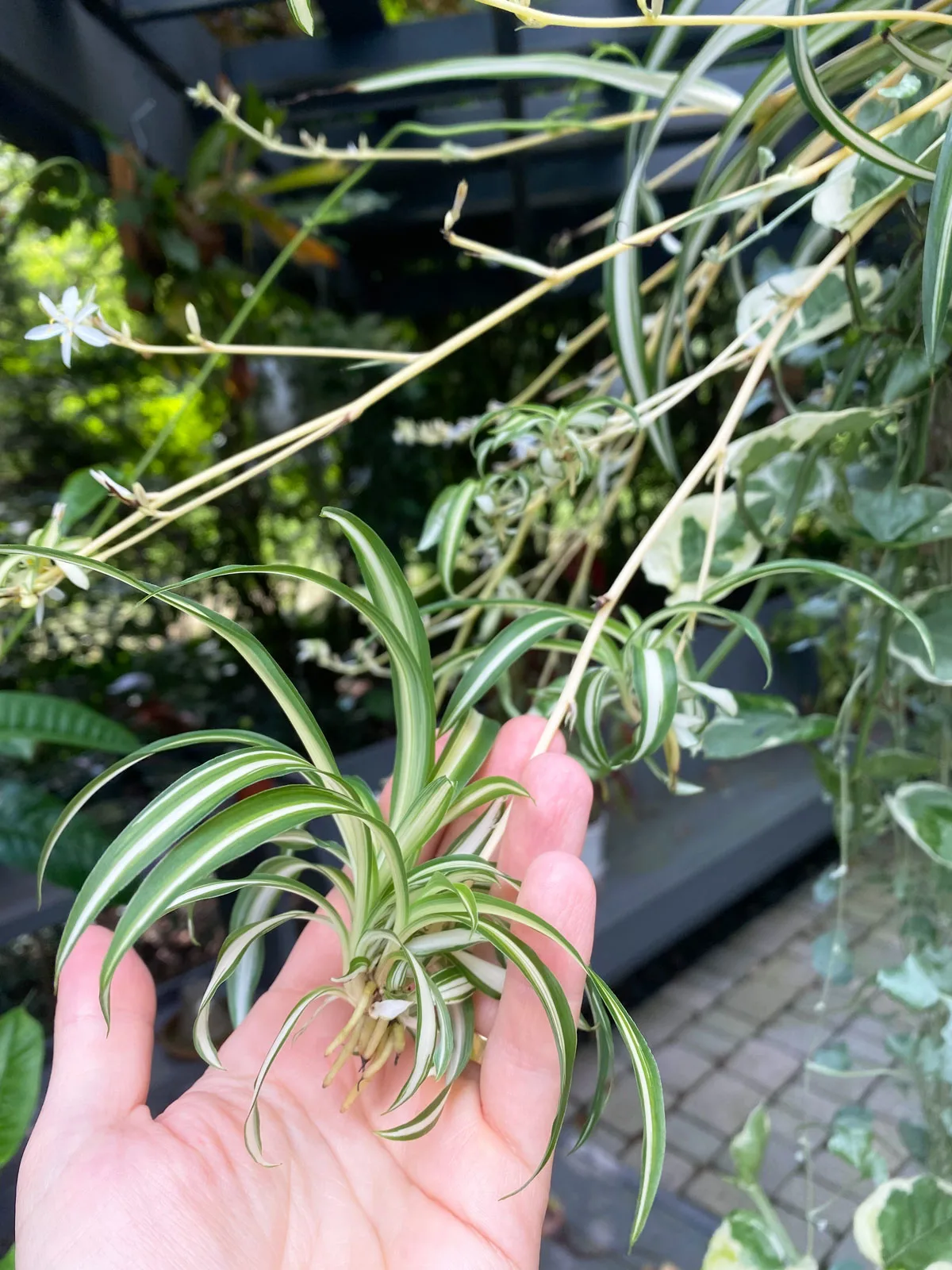
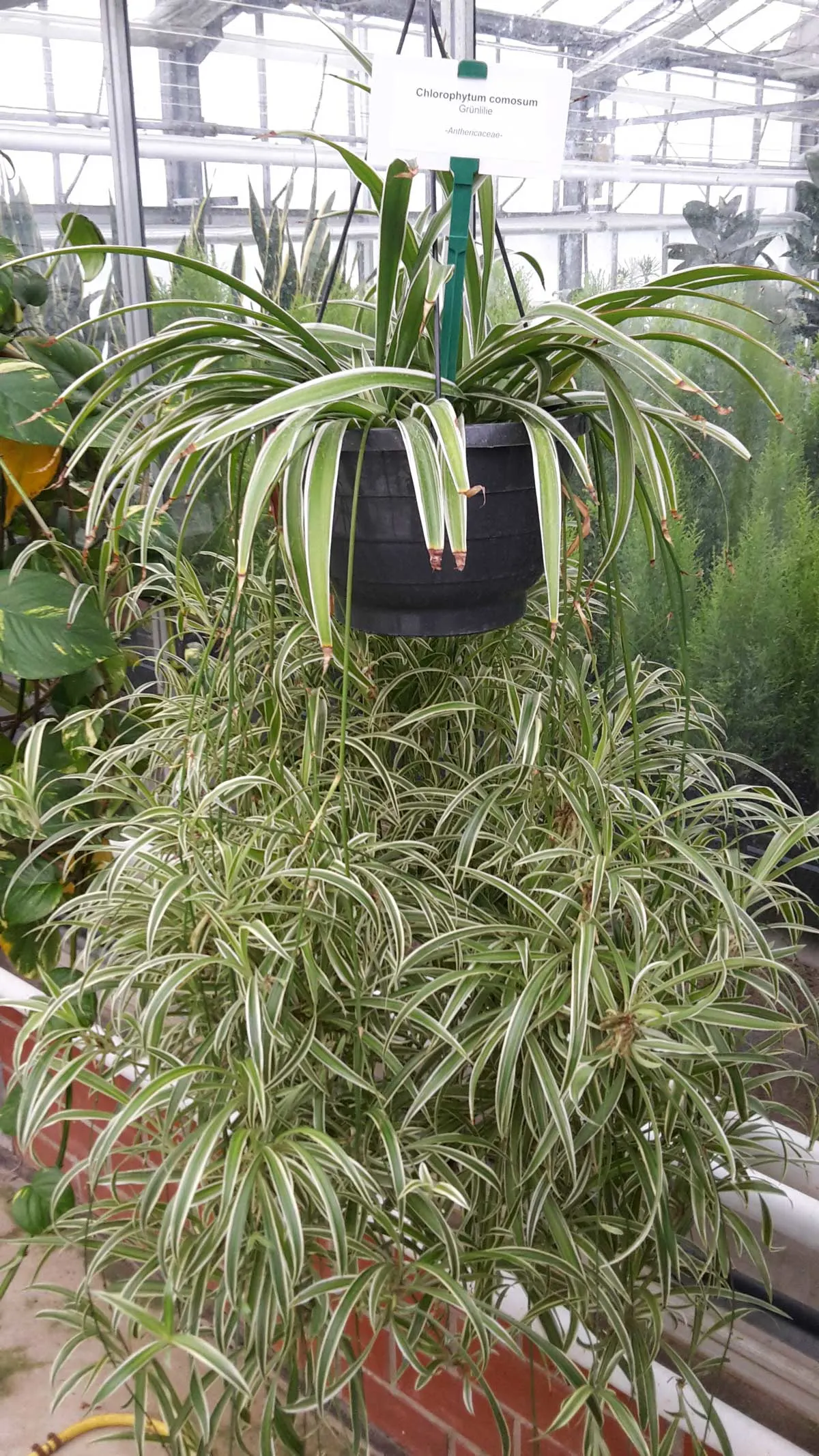
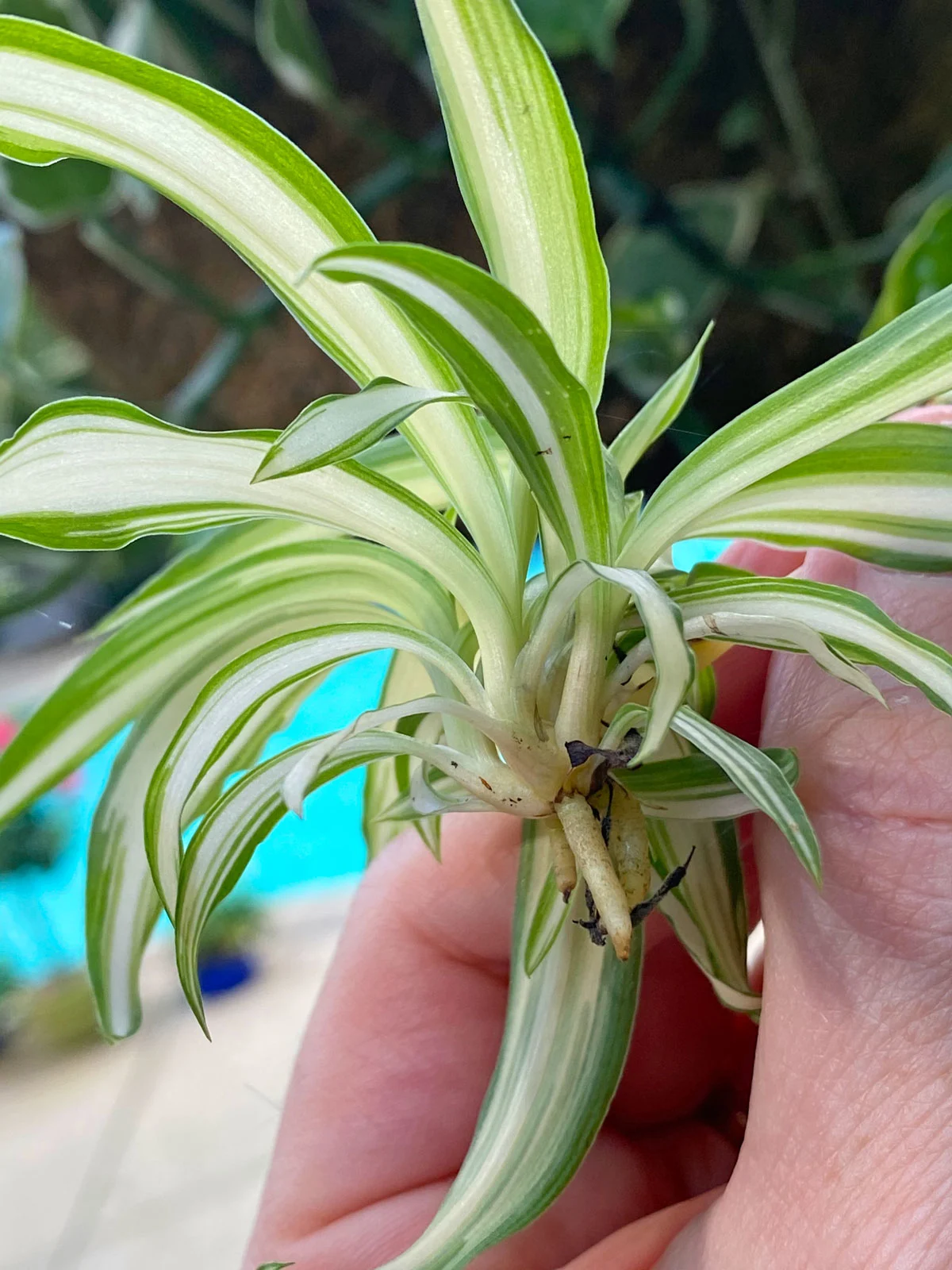
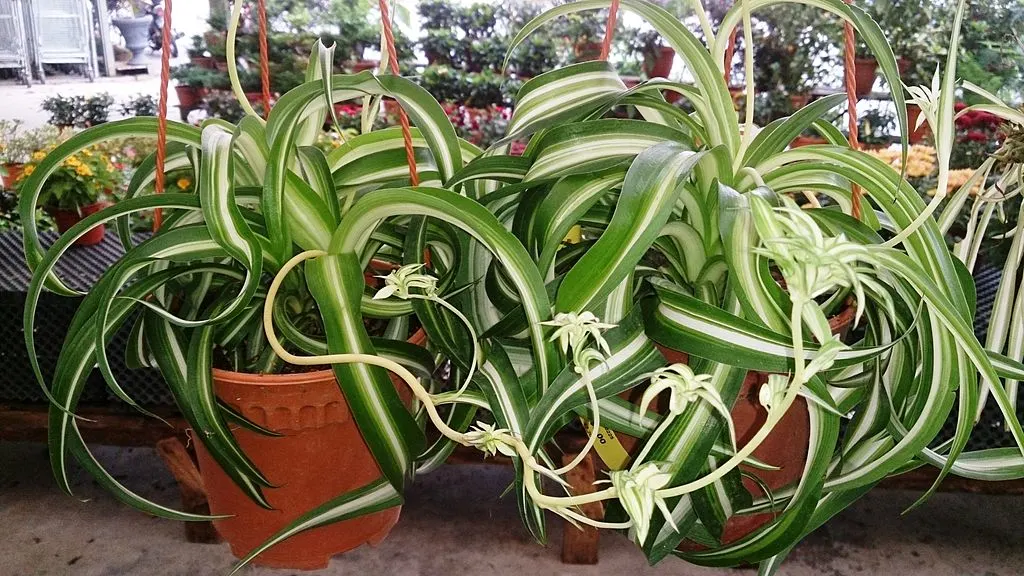
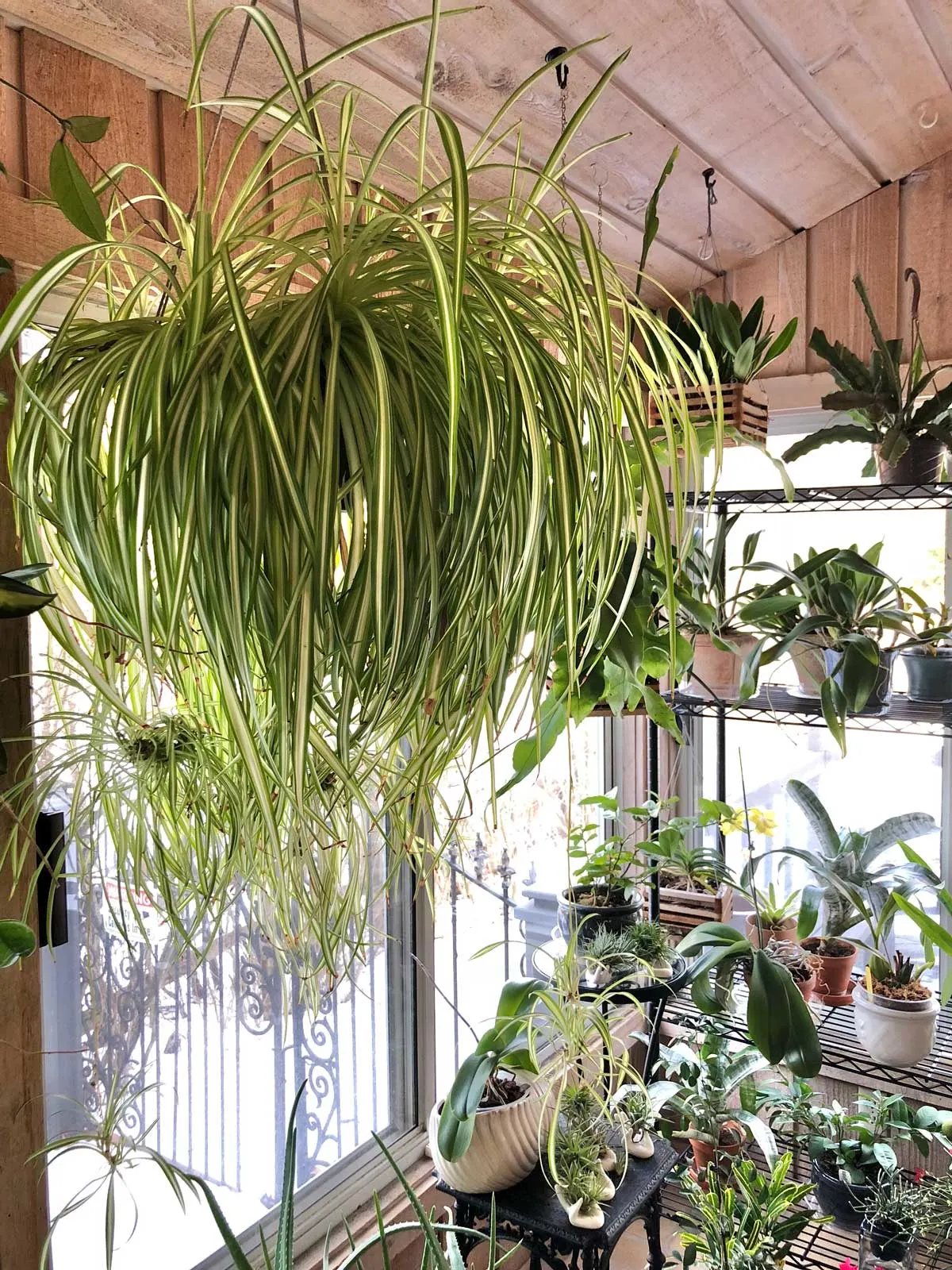
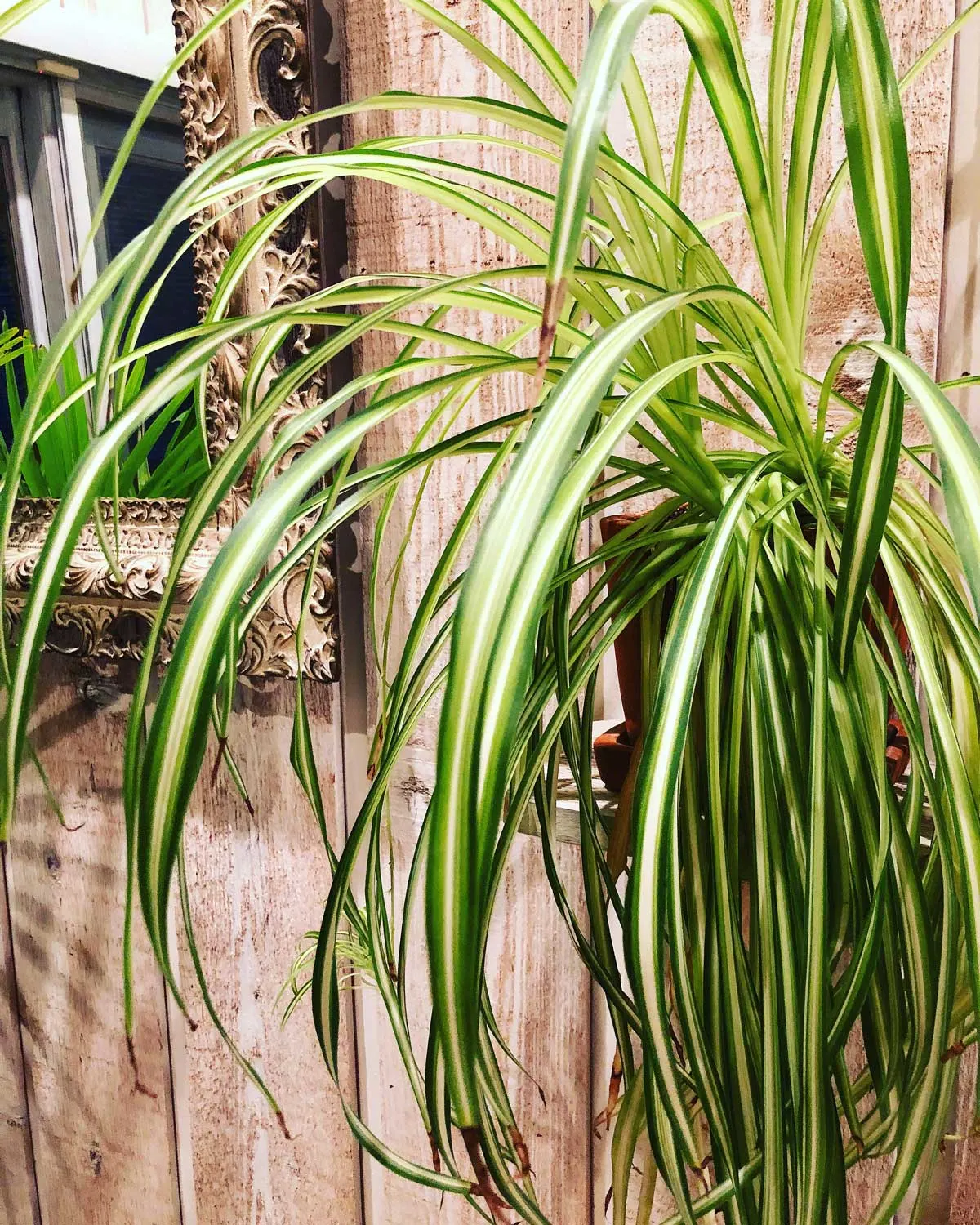
Jack Loke
Saturday 21st of October 2023
Is bottom-watering for spider plant (or any other plant in general) a good idea if you are away (eg on overseas holiday) for a week or two?
Raffaele
Saturday 21st of October 2023
Yes, you could definitely try that. I'll refer you to my blog post on this exact topic of what to do with your plants while on vacation. I hope it helps a bit: https://www.ohiotropics.com/2019/01/15/watering-houseplants-while-away-on-vacation/
Alice McGee
Friday 29th of September 2023
Medium sized, I mean. Typo, sorry.
Alice McGee
Friday 29th of September 2023
How much water in milliliters does a medium mixed spider plant need? I am doing a sound experiment for a science fair.
Raffaele
Friday 29th of September 2023
Hi Alice! I'm afraid I don't have a good answer for that. I don't measure out water when I water any plant. I thoroughly soak the plant until water escapes the drainage hole. But, I just had an idea. What if you weighed your spider plant before watering, and then again after watering (but let excess water drain away). And then subtract the two values and it will tell you how much water was absorbed by the soil. You can then use the density of water to convert from weight to volume.
Lisa Schmeltzer
Sunday 23rd of July 2023
I live in a north facing townhome, meaning I get no direct sun. I like spider plants because they are forgiving. Plus I have a grow light. I have an issue with bugs in my potting soil, aphids, gnats and like that. So now I’ve gotten into the the water from bottom or top argument. If I water from the bottom, no chance of overwatering for the bugs, if I water from the top I’ll have cook my potting soil to kill the bugs before I replant my spider. Any advice?
Raffaele
Monday 24th of July 2023
Aphids and fungus gnats are completely different, and it would be fungus gnats that are encouraged to multiply if your soil stays too wet all the time. Are you sure your plants have aphids? I'll refer you to my fungus gnat post if you're having a big issue with them. I personally prefer top watering, but you can see what works best for you. https://www.ohiotropics.com/2021/01/31/killing-fungus-gnats-houseplants/